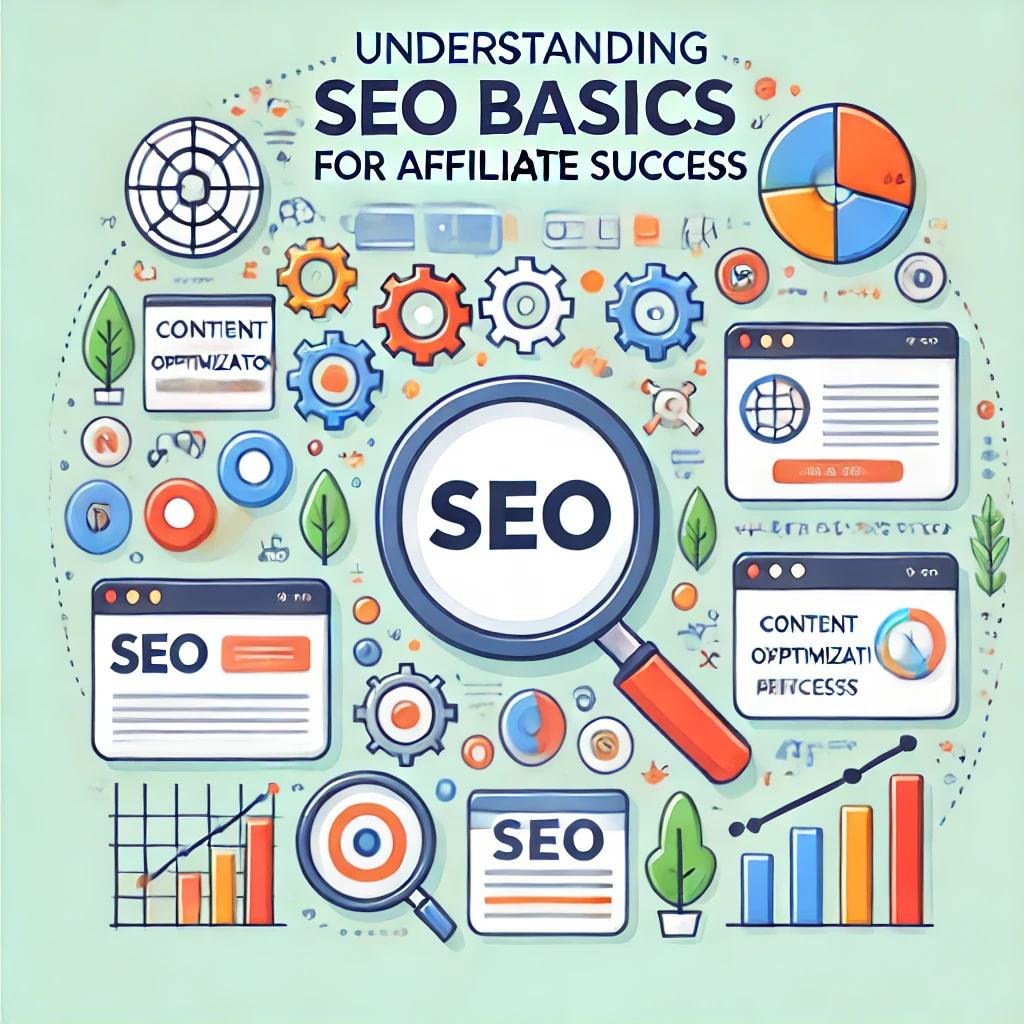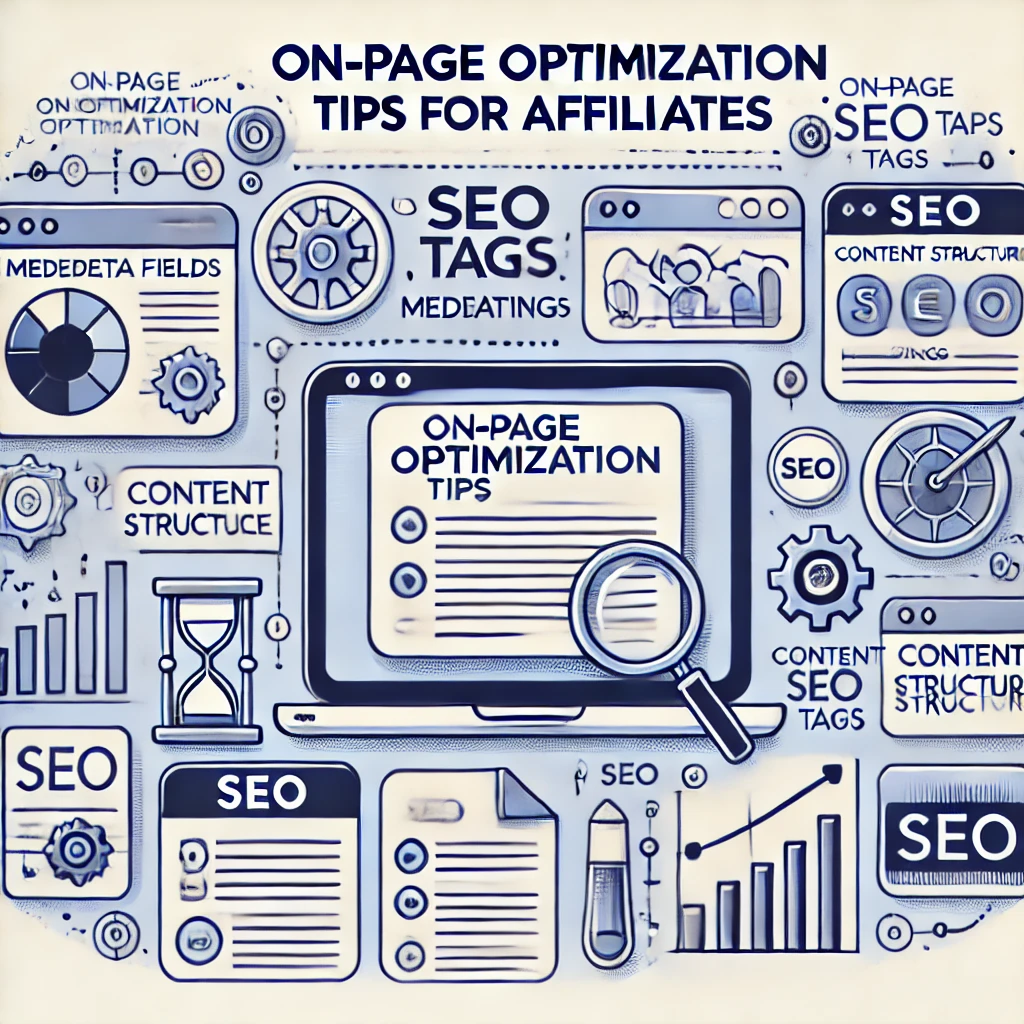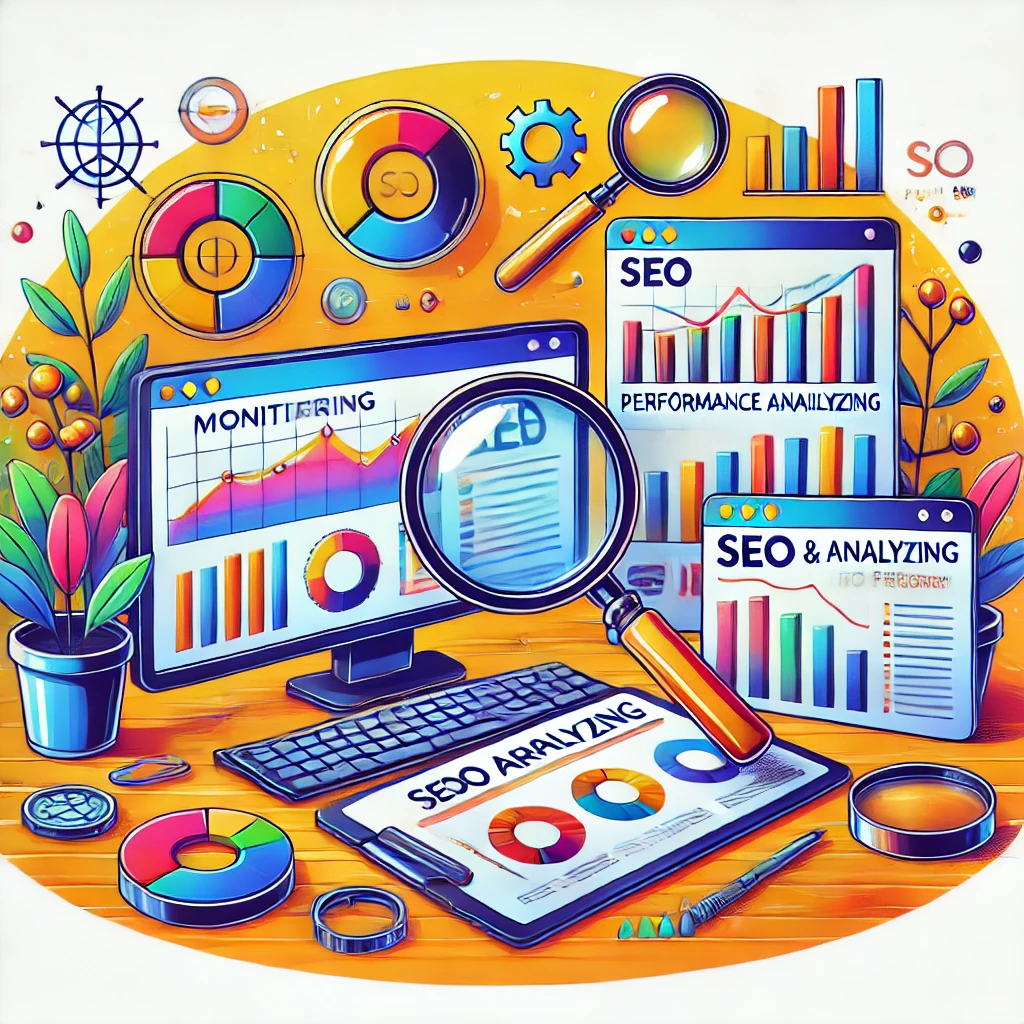Introduction
Imagine waking up on a crisp Monday morning, coffee in hand, and opening your laptop only to see your website’s traffic stuck in neutral. You’ve poured countless hours into crafting compelling content and promoting your affiliate products, yet something feels off—your audience isn’t finding you. It’s as if you’re shouting into a vast, empty canyon with no one to hear your message.
I remember my early days as a digital marketing consultant, when I too struggled with this silent void. I felt like I was wandering in a dense forest, unsure of which path would lead me to a thriving, engaged audience. That’s when I discovered the magic of SEO—a beacon that illuminates the right trail and transforms your online presence from an echo to a resounding chorus.
In this post, “SEO for Affiliates: Boost Traffic and Earnings,” we’ll embark on a journey to demystify SEO fundamentals. Whether you’re just starting out or looking to refine your strategy, this guide is designed to help you harness the full power of SEO to attract organic traffic and increase your affiliate earnings. Get ready to turn your digital dreams into reality, one optimized page at a time.
Key Point 1: Understanding SEO Basics

Before you can scale the towering heights of search engine rankings, you need to build a solid foundation. Think of SEO as the architectural blueprint of your online presence—a detailed plan that guides every decision you make about content, structure, and strategy. Without this blueprint, even the most beautifully designed affiliate website can crumble like a house built on sand.
The Blueprint of SEO
Imagine you’re planning a road trip across a sprawling, unfamiliar country. Would you set off without a map or GPS? Of course not. SEO works in much the same way—it’s your navigation tool in the vast digital landscape. At its core, SEO (Search Engine Optimization) is about making your website more visible and attractive to search engines like Google. When done right, it draws in a steady stream of organic traffic, connecting you with those who are actively searching for what you offer.
Breaking Down the Basics
- On-Page SEO:
This is like decorating the interior of your car before a long drive. It involves fine-tuning every element on your website—from crafting irresistible title tags and meta descriptions to structuring your content with clear headings and bullet points. On-page SEO ensures that both search engines and your readers can easily understand and navigate your content. - Off-Page SEO:
Think of this as the word-of-mouth recommendations you get along your journey. Off-page SEO encompasses all the actions taken outside your website to improve its authority and trustworthiness, such as earning high-quality backlinks from reputable sources and engaging on social media platforms. Just as a glowing recommendation can lead you to hidden gems on your trip, strong off-page SEO signals guide search engines to recognize your site as a reliable resource. - Technical SEO:
Imagine driving a car that’s perfectly tuned but constantly breaking down because of faulty wiring. Technical SEO is all about ensuring your website’s infrastructure is sound. It covers aspects like site speed, mobile responsiveness, and secure connections (HTTPS). A technically robust website is like a well-oiled machine that delivers a smooth, uninterrupted journey for your visitors.
A Personal Anecdote
In my early career, I once worked with a small affiliate site that was brimming with potential yet languished on the lower rungs of search results. The owner was passionate and knowledgeable, but they hadn’t invested in understanding the basics of SEO. We started by reworking the on-page elements—refining titles, adding structured data, and optimizing images. Slowly but surely, traffic began to trickle in, then flow steadily. Witnessing that transformation was like watching a garden blossom after a long, arid winter.
Questions to Ponder
- Have you taken the time to learn the basics of on-page, off-page, and technical SEO?
- Do you know which areas of your website could benefit most from optimization?
- Can you recall a moment when a small tweak led to a big change in your traffic numbers?
By grasping these fundamental concepts, you set the stage for every SEO tactic that follows. Like laying the first brick in a grand structure, understanding the basics is the indispensable first step toward building a successful affiliate marketing strategy.
Key Point 2: Keyword Research for Affiliates

Imagine being a treasure hunter in a vast digital landscape. Your treasure map? Keywords. These little nuggets of information guide potential customers to your website. In the competitive world of affiliate marketing, choosing the right keywords is the secret to unlocking steady, targeted traffic.
Tools & Techniques
When I first ventured into affiliate marketing, I felt overwhelmed by the sheer number of keywords vying for attention. Then I discovered tools like Google Keyword Planner, SEMrush, and Ahrefs. These tools are like a magnifying glass for your niche, helping you identify not just popular keywords, but the ones that are most relevant to your audience. Long-tail keywords, for instance, might not bring in a flood of traffic, but they attract visitors who are further along in the buying process—those who are ready to convert.
Selecting the Right Keywords
Finding the right balance is key. Picture it like fishing: you want to use the right bait to catch the fish that matter. High-volume keywords can be tempting, but they often come with stiff competition. Instead, look for those niche, long-tail keywords that signal clear intent. Ask yourself:
- Are these keywords aligned with the products you promote?
- Will they attract readers who are ready to take action?
Integrating Keywords Naturally
The real art lies in weaving these keywords into your content seamlessly. Think of it as crafting a story—keywords should enhance your narrative, not disrupt it. In one of my early campaigns, I learned that forcing keywords into every sentence ruined the flow of my content. Instead, I began treating them like seasoning in a recipe: just enough to bring out the flavor, but not so much that they overpower the dish.
Real-World Example
Consider a successful affiliate blogger who discovered that a modest, long-tail keyword like “eco-friendly travel gear reviews” not only attracted a passionate audience but also led to a significant spike in conversions. By targeting a specific niche, this blogger not only increased traffic but also established themselves as an authority in that area.
Questions to Reflect On
- Are you targeting keywords that match your audience’s search intent?
- How often do you revisit your keyword strategy to adjust for trends or changes in your niche?
- What’s one new long-tail keyword you could experiment with this week?
Key Point 3: On-Page SEO Optimization

Imagine walking into a beautifully organized store where every product is clearly labeled and displayed. On-page SEO is the equivalent of that experience for your website. It ensures that visitors—and search engines—can navigate your content with ease and clarity.
Crafting Compelling Meta Elements
Every page on your website is like a mini billboard. Your title tags and meta descriptions are the first impression potential visitors get, so they must be compelling and accurate. Think of your title as a movie trailer; it should intrigue and inform simultaneously.
Structuring Content for Readability
Breaking your content into clear sections with headers (H1, H2, H3) is like using signposts along a hiking trail. It guides your readers through your narrative, ensuring they don’t get lost. I once revamped a blog post by simply adding descriptive headers and bullet points. The result? Readers spent 40% more time on the page, and the bounce rate dropped significantly.
Enhancing Content Quality
Quality content is your golden ticket. It’s not just about stuffing keywords; it’s about providing value. Imagine you’re a storyteller—each piece of content should solve a problem, answer a question, or spark an idea. Whether it’s an in-depth review or a helpful guide, make sure every word serves a purpose.
Optimizing Multimedia
Images, videos, and infographics are powerful tools in your on-page SEO arsenal. They not only break up text but also enhance engagement. Always use descriptive alt tags for images and ensure that multimedia elements load quickly to keep your visitors from bouncing away.
Reflective Questions
- Do your pages have unique and engaging title tags and meta descriptions?
- Is your content structured in a way that makes it easy for readers to digest?
- How can you improve the multimedia elements on your site to better support your message?
Key Point 4: Off-Page SEO & Link Building

Now that you’ve built a strong internal foundation, it’s time to reach out to the digital community. Off-page SEO is like building relationships at a networking event—it’s all about trust and credibility.
The Power of Backlinks
Imagine each backlink as a vote of confidence from another website. When reputable sites link back to your content, search engines take notice. Backlinks are the digital equivalent of referrals from trusted friends. One of my clients experienced a dramatic improvement in rankings after we secured a handful of guest posts on high-authority blogs in their niche.
Effective Link Building Strategies
There are many ways to earn those coveted backlinks:
- Guest Posting: Share your expertise on reputable sites in exchange for a link back.
- Influencer Collaborations: Partner with influencers who can vouch for your content.
- Content Syndication: Republish your best content on other platforms to widen your reach.
- Social Media Engagement: Regularly share your content on social media to encourage organic shares and links.
Fostering Social Signals
In today’s digital age, social signals—likes, shares, and comments—are more than just vanity metrics. They’re a sign that your content resonates with your audience. Encourage your readers to share their thoughts and experiences. The more your content circulates, the higher its perceived authority becomes.
Consider These Questions
- What unique angle can you offer that makes your content shareable?
- How can you build relationships with industry influencers to bolster your link-building efforts?
- Which off-page tactics have you found most effective, and why?
Key Point 5: Technical SEO and Site Performance

Think of your website as a high-performance sports car. Even if it’s beautifully designed and loaded with features, it won’t perform well if its engine isn’t tuned properly. Technical SEO ensures that your website’s infrastructure is as efficient and reliable as possible.
Optimizing Site Speed
Imagine waiting at a red light in heavy traffic—frustrating, isn’t it? Slow-loading pages can turn off visitors faster than you can say “bounce rate.” Tools like Google Page Speed Insights can help identify areas for improvement, from image compression to browser caching. I recall a project where optimizing images and minifying code reduced load times by over 50%, leading to longer visitor sessions and improved conversions.
Mobile Responsiveness
In today’s world, your website must perform seamlessly on every device. A mobile-friendly design is crucial, especially when a significant portion of traffic comes from smartphones. Think of it like having a versatile vehicle that can handle both city streets and off-road adventures—your site should adapt effortlessly to different screen sizes and user behaviors.
Ensuring Security & Crawlability
Secure connections (HTTPS) and a clear site structure are like a sturdy, well-lit road that guides both visitors and search engines safely through your site. Regular audits using tools like Google Search Console ensure that your site is free from crawl errors and security issues, making it easier for search engines to index your content.
Reflective Prompts
- When was the last time you ran a technical audit on your site?
- What steps can you take today to improve your site’s loading speed?
- Is your website fully optimized for mobile users?
Key Point 6: Integrating SEO with Your Content Strategy

Finally, let’s bring everything together. SEO isn’t a standalone tactic—it’s the backbone of your content strategy. By seamlessly integrating SEO into every piece of content you create, you ensure that your marketing efforts are aligned with your business goals.
Planning with Purpose
Imagine your content strategy as a well-organized symphony. Every article, video, or social post is a note in a larger composition. Start with a content calendar that aligns with seasonal trends, keyword insights, and your audience’s interests. This structured approach ensures that you’re not just creating content for the sake of it, but with a clear, strategic goal in mind.
Evergreen vs. Trendy Content
There’s a special kind of magic in evergreen content—articles and guides that remain relevant long after they’re published. While trending topics can drive quick spikes in traffic, evergreen content builds a lasting foundation for organic growth. Balancing these two types will create a dynamic and resilient content portfolio.
Refreshing Old Content
Don’t let your best work fade away. Periodically update your most successful posts to reflect new information, improved SEO practices, or changes in your niche. I’ve seen websites resurrected and catapulted to the top of search results simply by revisiting and revitalizing older content.
Engaging Your Audience
Incorporate interactive elements like infographics, polls, or quizzes into your content strategy. These not only make your content more engaging but also signal to search engines that your site offers value and keeps visitors on the page longer.
Thought-Provoking Questions
- How often do you revisit and update your content to keep it fresh?
- What balance do you maintain between informative and promotional content?
- Can you think of one piece of evergreen content that could be enhanced with new insights?
Visuals and Media Suggestions
- Diagrams & Flowcharts: Create visuals that map out the SEO process—from keyword research to on-page and off-page optimization. Place these near the respective sections for clarity.
- Screenshots: Use screenshots of tools like Google Keyword Planner, Google Analytics, and Google Search Console within the relevant sections to illustrate practical steps.
- Infographics: Develop an infographic summarizing the main SEO tips and statistics. This can be placed at the end of the post as a quick reference guide.
- Short Video Clips: Consider embedding brief video tutorials explaining technical concepts such as site speed optimization or backlinking strategies. These videos should be interspersed with the textual content where appropriate.
Conclusion
Mastering SEO is not just a technical challenge—it’s the cornerstone of building a thriving affiliate marketing business. By understanding the basics, conducting thorough keyword research, optimizing your pages, building authoritative backlinks, and ensuring top-notch technical performance, you’re setting your site up for long-term success.
Take a moment to reflect on your current SEO strategy. What’s one area where you could make an immediate improvement? Remember, every tweak you make is a step closer to turning your website into a powerhouse that attracts organic traffic and boosts earnings.
Audience Engagement
- Poll or Survey: Ask your readers, “Which SEO strategy do you find most challenging: keyword research, on-page optimization, or technical SEO?”
- Q&A Section: Invite your audience to share their experiences or questions in the comments. Engage with their responses to build a community.
- Downloadable Resource: Offer a free SEO checklist or audit guide that readers can print and use as they refine their strategies.
- Interactive Quiz: Embed a short quiz at the end of the post to test readers’ understanding of the SEO concepts discussed.
By integrating these strategies into your daily routine, you’re not just following a set of rules—you’re crafting a digital masterpiece that speaks to your audience and drives real results. Now, take what you’ve learned, apply it to your affiliate marketing strategy, and watch as your traffic and earnings begin to soar.
Happy optimizing!








